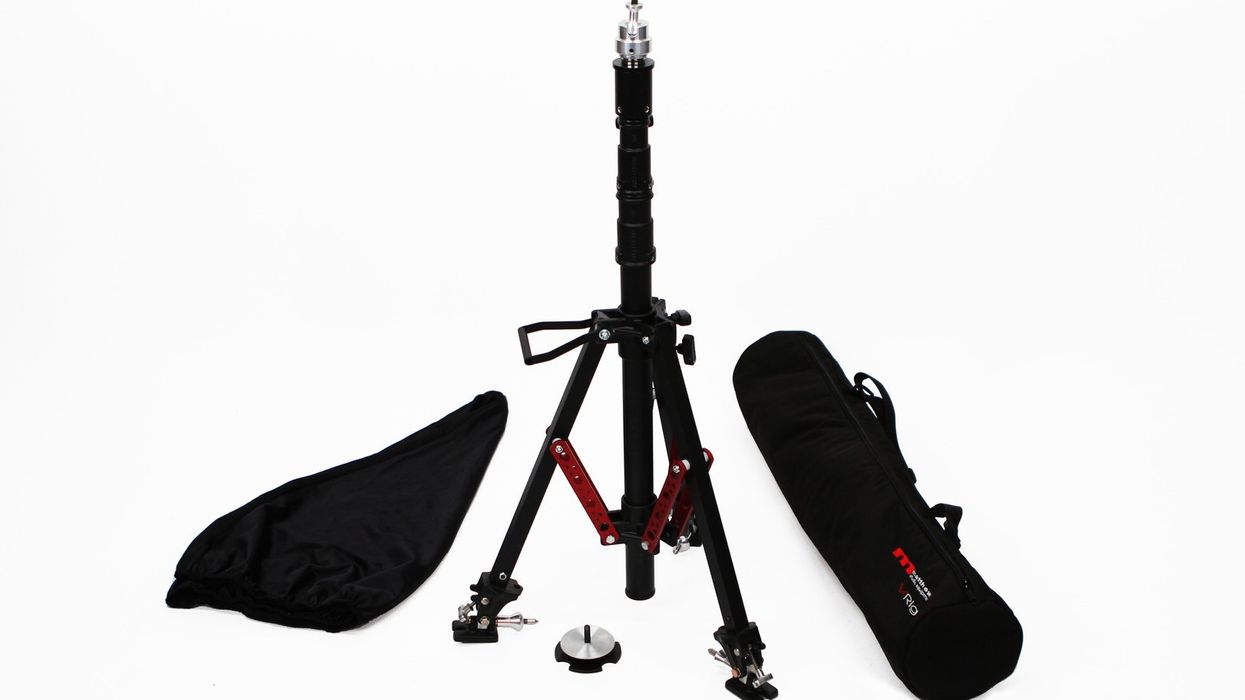MSE Tackles VR Camera Mounting with the New VRig
VR filmmaking is a whole new world, and one of the biggest challenges remains: how do you even mount the camera?

One of the big hurdles in narrative VR production is placing and mounting a camera in a world where the audience can see everything in all directions, 360 degrees around and up and down? When you have to literally think outside the frame? In addition to hiding the camera's tripod, you need to hide any cabling, lighting, or sound recording equipment that would normally be "behind the camera," since "behind the camera" doesn't exist in VR. Fortunately, there are a host of companies working on solutions, including the veteran grip equipment manufacturer Mathew Studio Equipment.
To save on paint-out for shots where the area below will naturally fall into darkness, the VRig comes with a pre-cut elastic skirt to perfectly wrap the base to blend into the shadows.
VRig also has an optional boom arm for extreme placement of your camera. Throughout the assembly are female mounts for lighting and sound equipment to further help minimize your gear footprint. The VRig is available in the lightweight S30 (~$900) and the heavyweight S75 (~$1200) models, with both versions being designed strongly enough for operators to comfortably leave the room knowing that the camera platform is stable and won't damage their camera arrays.
What do you guys think: has MSE solved one of VR's greatest challenges?












